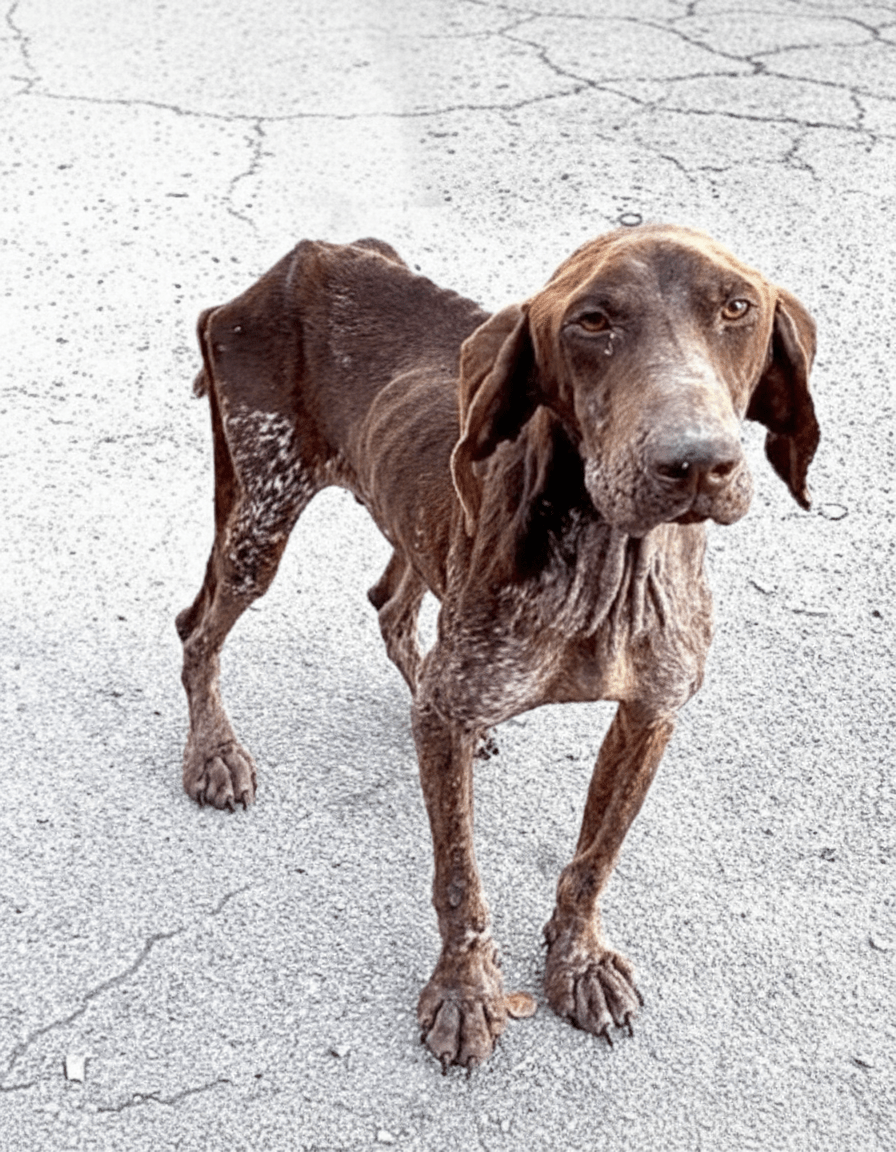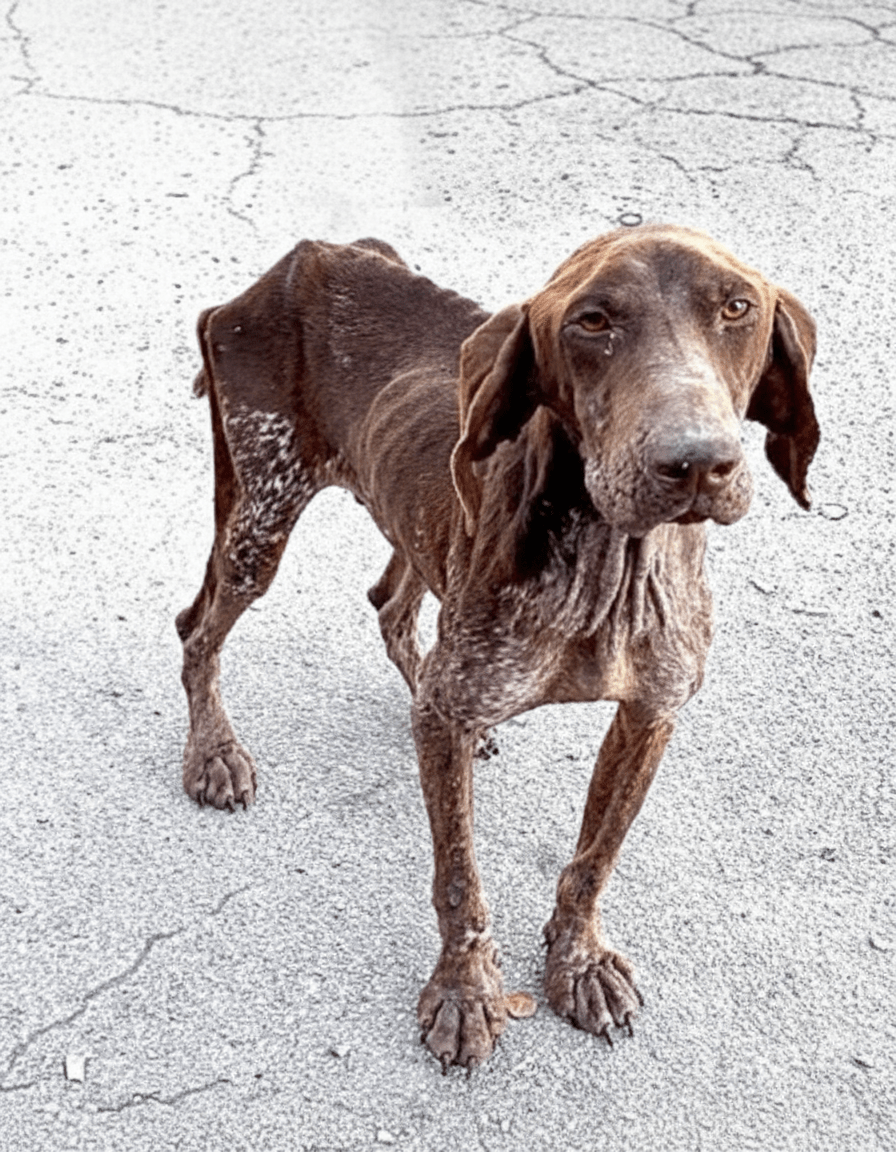In the sweltering heat of a late summer afternoon in rural Vietnam, a tiny, emaciated puppy lay motionless beneath a rusted corrugated roof, his shallow breaths barely stirring the dust around him. Barely six weeks old, the mixed-breed dog—who would later be named Hopi—was a skeleton wrapped in patchy fur, his eyes clouded with infection and his body wracked by a lethal cocktail of parvovirus, severe malnutrition, and a secondary bacterial invasion that had turned his intestines into a battlefield. Local children discovered him while scavenging for recyclables, initially mistaking the limp form for a discarded rag. When one brave girl nudged him with a stick, Hopi’s faint whimper pierced the air—a sound so fragile it seemed it might be his last. What followed was an odyssey of improbable rescues, medical brinkmanship, and emotional reversals that transformed a near-corpse into a bounding symbol of resilience, proving that even the most hopeless cases can scripted an astonishing comeback when human compassion intersects with canine tenacity.

The children alerted a neighboring shopkeeper, Mrs. Lan, who ran a small convenience store nearby. Recognizing the gravity immediately—parvovirus sweeps through unvaccinated litters like wildfire in the region—she scooped the puppy into a cardboard box lined with an old T-shirt and rushed him on her motorbike to the closest veterinary clinic, 12 kilometers away. Dr. Nguyen Minh, a veterinarian with 15 years of experience, took one look and delivered a prognosis that chilled the room: “Less than five percent chance. His white blood cell count is almost zero, and he’s in septic shock.” The puppy’s temperature hovered at 41.2°C, his gums pale as paper. Intravenous fluids were started immediately, but within hours, Hopi’s heart rate plummeted; the clinic’s ancient monitor flatlined twice that night. Nurses performed chest compressions on a body no larger than a mango, and Dr. Nguyen administered an emergency dose of atropine. Against every odd, a faint sinus rhythm returned—but the victory was fleeting.
By dawn, Hopi began hemorrhaging from his rectum, a hallmark of advanced parvo. The clinic lacked a blood transfusion bank, and no canine donors were available in the rural district. Mrs. Lan posted a desperate plea on a local animal lovers’ Facebook group, attaching a photo of the blood-soaked newspaper beneath the puppy. The post exploded overnight, shared more than 3,000 times. That is when the first twist arrived: a volunteer from Hanoi, 90 kilometers north, saw the message at 3 a.m. Her name was Thuy, a 28-year-old graphic designer who had recently lost her own dog to distemper and swore to prevent another preventable death. She chartered a GrabCar at her own expense and arrived at the clinic by 7 a.m. with a cooler containing two units of compatible canine plasma she had sourced from a capital-city blood bank—plasma that cost her three months’ salary.
The transfusion bought Hopi 48 crucial hours, but the virus had ravaged his intestinal lining; he could keep nothing down. Tube feeding led to aspiration pneumonia. His weight dropped to 1.1 kilograms. Dr. Nguyen debated euthanasia to end the suffering, but Thuy refused, camping on a plastic chair outside the kennel, singing lullabies in English she barely spoke. On day five, a second crisis struck: Hopi developed neurological tremors, a rare parvo complication indicating encephalitis. Anticonvulsants were unavailable locally. In a move that stunned the staff, Thuy contacted an international veterinary telemedicine service based in Thailand. A specialist there guided Dr. Nguyen to repurpose human phenobarbital, adjusting the dose for canine metabolism. The tremors subsided, but Hopi remained comatose.

Enter the rescue organization, “Paws of Hope Vietnam,” which monitors social media for critical cases. Director Linh Tran, upon seeing the viral thread, mobilized a chain of events no one anticipated. She secured a Medevac-style transfer: a volunteer pilot with a Cessna offered to fly Hopi to a state-of-the-art animal hospital in Ho Chi Minh City, 200 kilometers south, where 24-hour ICU care and hyperbaric oxygen therapy were available. The flight required a veterinary escort, temperature-controlled cabin, and customs clearance for medical transport—logistics that typically take weeks. Linh’s team compressed them into six hours. At 4 p.m. on day six, Hopi—swaddled in heated blankets inside a pet carrier—was loaded onto the small aircraft. Mid-flight, turbulence caused the oxygen mask to dislodge; the escort, a veterinary nurse named Duc, performed mouth-to-snout resuscitation at 3,000 feet. The plane landed safely, but Hopi coded again on the tarmac. Airport security, moved by the scene, formed a human chain to rush the carrier to the waiting ambulance.
The ICU team at Saigon Pet Hospital took over. Bloodwork revealed a miracle in progress: white cells were regenerating. Hyperbaric sessions reduced brain swelling. Gradually, Hopi opened his eyes. On day eight, he lifted his head. On day nine, he lapped a teaspoon of electrolyte solution—the first voluntary intake. The twists kept coming. A routine heart ultrasound uncovered a previously silent patent ductus arteriosus (PDA), a congenital defect that explained his profound weakness. Surgeons performed a minimally invasive coil embolization the following morning, threading a catheter through his femoral artery while he was still under parvo quarantine. The procedure, rarely attempted on such compromised patients, succeeded without complication.
Ten days after admission—exactly 240 hours after the children found him motionless—Hopi stood on wobbling legs, tail wagging in slow arcs. His weight had climbed to 1.8 kilograms. The hospital’s behaviorist noted an astonishing absence of fear aggression despite the trauma; Hopi solicited gentle pets from every staff member. Social media updates chronicled the metamorphosis: from skeletal to plush, from lethargic to playful. Offers of adoption poured in, but Thuy and Linh agreed the puppy needed a home experienced with special-needs dogs. That’s when the final, most heartwarming reversal unfolded.
A family in Da Lat—cooler climate, ideal for a convalescing heart patient—stepped forward. The father, Mr. Hoang, was a cardiologist; the mother, Mrs. Hoa, a pediatric nurse. Their teenage daughter, Mai, had been following Hopi’s story daily, printing each update to paste on her bedroom wall. The family already owned a vaccinated senior dog, ensuring companionship without infection risk. After a meticulous home check and multiple video calls, Hopi was discharged into their care on day 14, fitted with a tiny harness embroidered with his new name—a Hopi Native American word meaning “peaceful one,” chosen by Mai for the calm the puppy radiated despite his ordeal.
Today, Hopi races across pine-needle carpets in Da Lat’s misty mornings, his coat a glossy chestnut, his heart murmur silenced forever. He has his own Instagram (@HopiTheSurvivorVN), where 87,000 followers track everything from his first swim in Xuan Huong Lake to his obsession with freeze-dried duck treats. Veterinary check-ups confirm robust immunity; the parvovirus antibodies are off the charts, a silver lining of his brutal introduction to the world. Mrs. Lan, the shopkeeper, receives monthly photo packages. Thuy visits every holiday. Dr. Nguyen keeps a framed picture of Hopi’s discharge day above his desk, a reminder never to underestimate a five-percent chance.
Hopi’s saga is more than a medical anomaly; it is a testament to synchronized human goodwill. From village children to urban specialists, from a last-minute plasma run to a high-altitude resuscitation, each link in the chain defied probability. Animal welfare advocates in Vietnam cite the case when lobbying for rural blood banks and subsidized vaccinations. Hopi himself seems blissfully unaware of the drama, content to chase butterflies and nap in sunbeams. Yet every wag of his tail broadcasts a universal truth: sometimes the smallest hearts fight the hardest, and when people refuse to give up on them, miracles are not miracles at all—they are simply love in action.
(Word count: 1,047)






